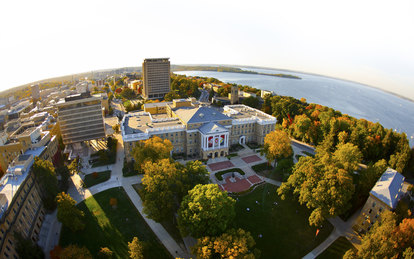A Thoughtful Master Plan Can Transform Your Campus

The design and implementation of a successful campus master plan is often a decades-long process built upon partnerships, trust, teamwork, talent, and a shared vision. Though changes in administrators, leadership, funding, and a myriad of factors can result in stops, starts and reboots along the way, a strategically crafted master plan is a tried-and-true way for institutions to remain visionary in an evolving marketplace.
A master plan is a beautiful tool that gives universities an opportunity to re-examine the direction in which they are heading every 10 to 20 years and prioritize near- and long-term capital improvement goals. This “check-up” allows an institution to continuously improve its campus in ways that best align with its mission, vision, and goals. It also helps advance significant campus landscape and public space improvements that might otherwise be cut due to budget concerns.
Working in partnership with a trusted planning and design firm throughout the master planning process goes even further to help a university reach its long-term vision over time. SmithGroup’s longstanding relationship with the University of Wisconsin-Madison and the completion of its Alumni Park exemplifies the value that can be achieved through a successful planning-design partnership relationship.
Our two organizations worked together for more than 20 years to achieve a common goal – to one day bring the university’s dream of an East Campus Gateway…a new front door and 10-block bike-ped connector for the university…to life. The result is a series of built projects that have had lasting impact on the identity of UW-Madison’s campus and the way it has evolved. Even as administrations changed, the East Campus Gateway was realized piece by piece in a series of campus redevelopment projects over the course of a decade.
Which brings us back to Alumni Park. As part of the master planning process, our team works with clients to identify catalytic projects and then develop an implementation framework that delivers the most impact. As we went through this process with UW-Madison, one of the most important decisions that the team made was to leave this jewel of a project – the green space along the lake – until last. Creating a signature waterfront gateway had been a goal of the university for over 100 years. Coordinating it with improvements to the Memorial Union and its signature Terrace provided the opportunity to truly do it right.
Thanks to this strategic approach, Alumni Park has become one of the most transformational and beloved projects on UW-Madison’s campus, and was recognized with an Honor Award for Landscape Architectural Design from the Society for College and University Planning. One need only look at images from before and after its implementation to understand the physical impact it has had upon this part of campus. Less than five years ago we’d be looking at a parking lot and loading dock. The fact that it is now an outdoor gallery, museum, park, and gathering space is a testament to the dedication of the Wisconsin Alumni Association, the University, and the design team. Through exhibits, sculptures, descriptive panels, gardenesque paths, and more, this greenspace tells the story of what it means to be “a Badger” and celebrates the achievements of alumni who have impacted the university, the community and the world.
This physical manifestation of over a century of progress is proof that planning, partnership, persistence, and patience can yield amazing, transformative results.